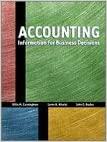Answered step by step
Verified Expert Solution
Question
1 Approved Answer
Master Budget Case Project CHECK FIGURES (2a) February purchases: $64,680 (2b) February cash disbursements for purchases: $59,160 Franchesca Company, a merchandising company, prepares its master
| Master Budget Case Project | ||||||
| CHECK FIGURES | ||||||
| (2a) February purchases: $64,680 | ||||||
| (2b) February cash disbursements for purchases: $59,160 | ||||||
| Franchesca Company, a merchandising company, prepares its master budget on a quarterly basis. The following data have been assembled to assist in preparation of the master budget for the first quarter. | ||||||
| a. | As of December 31 (the end of the prior quarter), the companys balance sheet showed the following account balances: | |||||
| Cash | $6,800 | |||||
| Accounts receivable | $36,200 | |||||
| Inventory | $11,000 | |||||
| Buildings and equipment (net) | $127,000 | |||||
| Accounts payable | $32,100 | |||||
| Common stock | $93,500 | |||||
| Retained earnings | $55,400 | |||||
| $181,000 | $181,000 | |||||
| b. | Actual and budgeted sales are as follows: | |||||
| December (actual) | $56,800 | |||||
| January | $74,400 | |||||
| February | $92,800 | |||||
| March | $91,200 | |||||
| April | $52,000 | |||||
| c. | Sales are 30% for cash and 70% on credit. All payments on credit sales are collected in the month following the sale. The accounts receivable at December 31 are a result of December credit sales. | |||||
| d. | The companys gross margin percentage is 30% of sales. (In other words, cost of goods sold is 70% of sales.) | |||||
| e. | Each months ending inventory should equal 25% of the following month's budgeted cost of goods sold. | |||||
| f. | One-quarter of a months inventory purchases is paid for in the month of purchase; the other three-quarters is paid for in the following month. The accounts payable at December 31 are the result of December purchases of inventory. | |||||
| g. | Monthly expenses are as follows: commissions, 15% of sales; rent, $2,550; other expenses (excluding depreciation), 10% of sales. Assume that these expenses are paid monthly. Depreciation is $2,700 for the quarter and includes depreciation on new assets acquired during the quarter. | |||||
| h. | Equipment will be acquired for cash: $4,150 in January and $8,150 in February. | |||||
| i. | Management would like to maintain a minimum cash balance of $5,000 at the end of each month. The company has an agreement with a local bank that allows the company to borrow in increments of $1,000 at the beginning of each month, up to a total loan balance of $50,000. The interest rate on these loans is 1% per month, and for simplicity, we will assume that interest is not compounded. Accumulated interest on any amounts borrowed must be paid at the end of the quarter. Also, to the extent it is able (i.e., while maintaining the minimum cash requirement), the company must repay any outstanding loans at the end of the quarter |
Required:
| Using the data above, complete the following statements and schedules for the first quarter: | ||||||
| 1. | Schedule of expected cash collections: | |||||
| January | February | March | Total | |||
| Cash sales | $22,320 | |||||
| Credit sales | $36,200 | |||||
| Total collections | $58,520 | |||||
| 2a. | Merchandise purchases budget: | |||||
| January | February | March | Total | |||
| Budgeted cost of goods | $52,080 | * | $64,960 | |||
| Add desired ending inventory | $16,240 | |||||
| Total needs | $68,320 | |||||
| Less beginning inventory | $11,000 | |||||
| Required purchases | $57,320 | |||||
| *$74,400 sales 70% = $52,080 | ||||||
| $92,800 70% 25% = $16,240 | ||||||
| 2b. | Schedule of expected cash disbursements for merchandise purchases: | |||||
| January | February | March | Total | |||
| December purchases | $32,100 | * | $32,100 | |||
| January purchases | $14,330 | $42,990 | $57,320 | |||
| February purchases | $0 | |||||
| March purchases | $0 | |||||
| Total cash disbursements for purchases | $46,430 | |||||
| *Beginning balance of the accounts payable. | ||||||
| 3. | Schedule of expected cash disbursements for selling and administrative expenses: | |||||
| January | February | March | Total | |||
| Commissions | $11,160 | |||||
| Rent | $2,550 | |||||
| Other expenses | $7,440 | |||||
| Total cash disbursements for selling and administrative expenses | $21,150 | |||||
| 4. | Cash budget: | |||||
| January | February | March | Total | |||
| Cash balance, beginning | $6,800 | |||||
| Add cash collections | $58,520 | |||||
| Total cash available | $65,320 | |||||
| Less cash disbursements: | ||||||
| For inventory | $46,430 | |||||
| For operating expenses | $21,150 | |||||
| For equipment | $4,150 | |||||
| Total cash disbursements | $71,730 | |||||
| Excess (deficiency) of cash | ($6,410) | |||||
| Financing | ||||||
| Etc. | ||||||
| 5. | Prepare an absorption costing income statement for the quarter ending March 31 as shown in Schedule 9 in the chapter. | |||||
| 6. | Prepare a balance sheet as of March 31. |
Step by Step Solution
There are 3 Steps involved in it
Step: 1

Get Instant Access to Expert-Tailored Solutions
See step-by-step solutions with expert insights and AI powered tools for academic success
Step: 2

Step: 3

Ace Your Homework with AI
Get the answers you need in no time with our AI-driven, step-by-step assistance
Get Started


